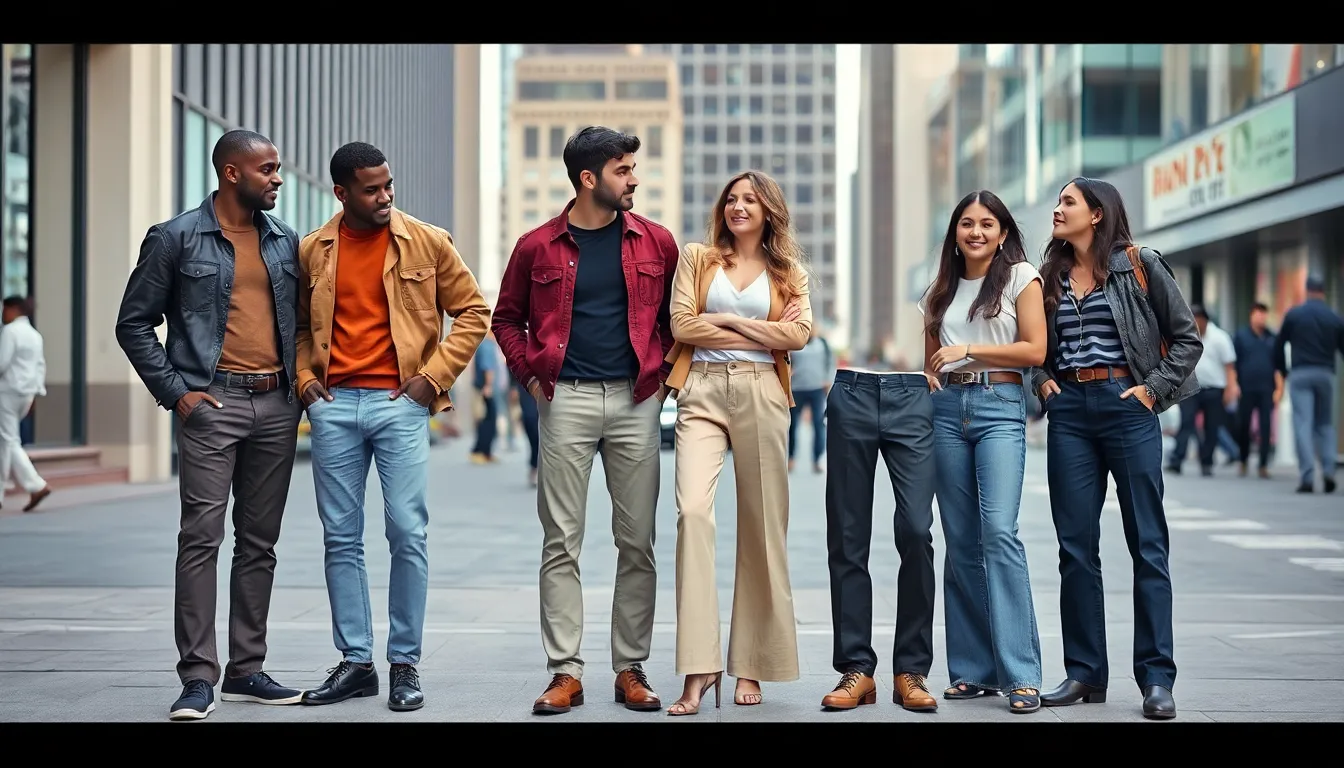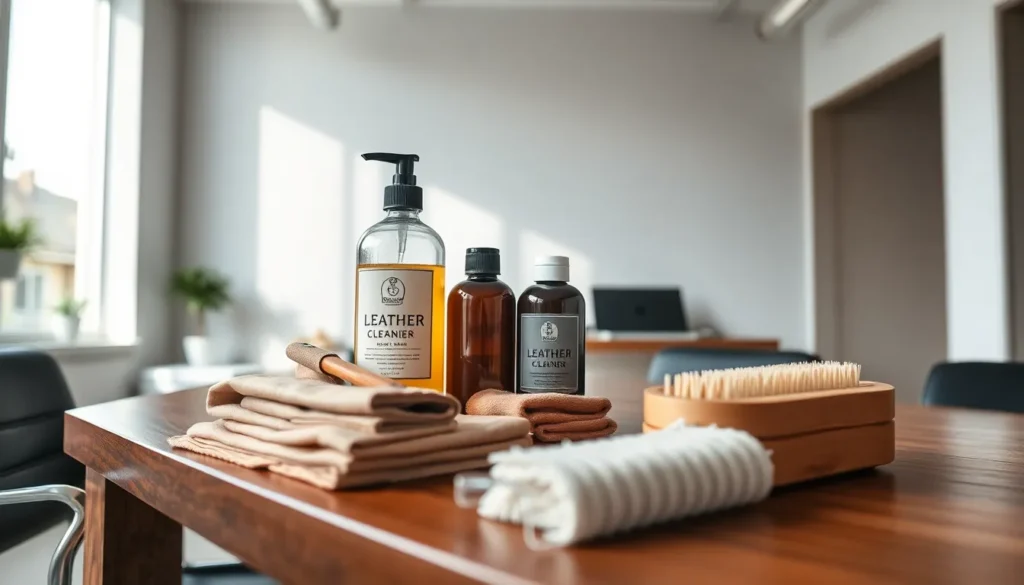Navigating the world of clothing sizes can feel like a daunting task, especially when it comes to finding the perfect fit. For many, size 36 in US pants represents a balance between comfort and style. Understanding what this size truly means can help shoppers make informed choices and avoid the frustration of ill-fitting garments.
In the realm of men’s and women’s fashion, size 36 often serves as a benchmark for those seeking a tailored appearance without sacrificing comfort. This article delves into the specifics of size 36, exploring its measurements, how it translates across different brands, and tips for selecting the right pair. Whether it’s for casual wear or formal occasions, knowing the ins and outs of size 36 can elevate any wardrobe.
Table of Contents
ToggleUnderstanding Size 36 In US Pants
Size 36 in US pants signifies a specific waist measurement often associated with a comfortable fit. Understanding this size helps shoppers navigate the complexities of clothing brands and styles.
What Does Size 36 Mean?
Size 36 refers to a waist measurement of 36 inches around. This standard usually correlates with pants designed for a body shape that accommodates various builds. Brands may vary in their fit, so variations in actual measurements occur. For example, some brands may label size 36 as equivalent to size 34 or size 38 in others, depending on their sizing charts.
Measuring Your Waist Size
To determine waist size accurately, follow these steps:
- Select a Flexible Measuring Tape: Use a cloth or vinyl measuring tape for flexibility.
- Find the Right Spot: Locate the natural waistline, typically above the belly button and below the ribcage.
- Wrap the Tape Around: Position the tape snugly but not tight. Ensure it sits parallel to the floor.
- Take the Measurement: Note the measurement where the tape overlaps. If it falls between sizes, round up to the nearest whole number for US sizing.
Accurate measurements ensure an ideal fit, reducing the chance of needing alterations afterward.
Fit And Style Options For Size 36


Size 36 pants offer various fit and style options for both men and women. Understanding these choices helps shoppers find the most flattering and comfortable fit for their preferences.
Different Cuts and Fits
- Straight Fit: Straight fit pants feature a consistent width from the hip to the ankle. This cut suits various body types and provides a classic look.
- Slim Fit: Slim fit pants taper slightly at the leg, offering a more tailored appearance. This style appeals to those seeking a modern, sleek silhouette.
- Relaxed Fit: Relaxed fit pants provide extra room through the leg and seat. This cut emphasizes comfort, making it ideal for casual wear.
- Bootcut: Bootcut pants slightly flare from the knee down, allowing for ample space for footwear. This style works well for creating a balanced look over boots or heels.
- Wide Leg: Wide leg pants offer a loose fit throughout the leg. This cut promotes airflow and comfort while making a bold fashion statement.
Popular Styles for Men and Women
- Chinos: Chinos present a versatile option for both genders. They can transition seamlessly from casual to semi-formal occasions and are available in multiple colors.
- Jeans: Jeans in size 36 come in numerous styles, including skinny, straight, and bootcut. Their durability and range of washes make them a wardrobe staple.
- Trousers: Trousers deliver a polished appearance suitable for business or formal settings. Size 36 trousers often feature tailored fits and lightweight fabrics for comfort.
- Cargo Pants: Cargo pants introduce functional style with extra pockets and a relaxed fit. They cater to outdoor enthusiasts and casual wearers alike.
- Athletic Pants: Athletic pants provide flexibility and comfort for active wear. Popular among both men and women, they often feature moisture-wicking materials and an elastic waistband.
Materials And Fabrics
Understanding the materials and fabrics used in size 36 pants plays a significant role in ensuring comfort and style. Different fabric types offer various benefits, from breathability to stretch.
Common Fabric Types
- Cotton: Cotton provides softness and breathability, making it ideal for casual wear. It’s often used in jeans and chinos.
- Polyester: Polyester adds durability and wrinkle resistance. This fabric often appears in athletic pants and dress trousers.
- Spandex: Spandex enhances flexibility and stretch, allowing for improved movement and comfort in fitted styles. It’s often blended with other fabrics for activewear.
- Wool: Wool offers warmth and structure, commonly found in dress pants. Its moisture-wicking properties make it suitable for varying temperatures.
- Denim: Denim fabric, usually cotton-based, combines strength with style. It’s a staple in jeans, available in various washes and finishes.
Comfort and Durability
Comfort and durability heavily depend on the chosen fabric.
- Breathable fabrics: Cotton and linen enhance airflow, keeping wearers comfortable in warm conditions.
- Stretchable options: Blends with spandex provide flexibility, accommodating various activities without sacrificing fit.
- Resilience: Polyester and wool resist wear while maintaining their shape. This ensures longevity, making them smart investments in a wardrobe.
- Washability: Most common materials allow for easy care; however, following washing instructions ensures that pants retain their fit and quality.
Selecting the right combination of fabric types impacts overall satisfaction with size 36 pants, enabling personal expression through style while prioritizing comfort and longevity.
How To Choose The Right Size 36 Pants
Selecting the right size 36 pants involves considering both fit and personal style preferences. Utilizing the following tips can help ensure a successful choice.
Tips for Trying On Pants
- Check Waist Fit: Ensure the pants sit comfortably around the waist. A snug but not restrictive fit indicates the correct size.
- Inspect Rise: Assess the rise, which affects comfort and style. Low-rise, mid-rise, and high-rise options influence how the pants sit on the body.
- Evaluate Leg Length: Confirm that the pant length accommodates your height. Consider options like regular, short, or long lengths as necessary.
- Trial Movement: Perform basic movements, such as bending or walking. This helps determine if the fabric and fit allow for adequate mobility.
- Consider Style Preferences: Determine which cut aligns with personal style, whether it be straight fit, slim fit, or relaxed fit.
- Bring Appropriate Footwear: Wear shoes similar to what you’d typically pair with the pants as footwear impacts the overall look.
Alteration Options
- Waist Alteration: Tailors can easily adjust the waist size for a more customized fit, whether letting it out or taking it in.
- Length Adjustment: Shortening or lengthening pants is a common alteration, accommodating different inseam lengths for a polished look.
- Hem Customization: Altering the hem style, such as creating cuffs or a raw edge, adds a unique touch to the pants.
- Tapering Legs: Tapering the legs can create a slimmer silhouette, enhancing the overall appearance for a tailored finish.
- Adding Details: Tailors can also add elements like belt loops and pockets for a more functional or stylish result based on preferences.









